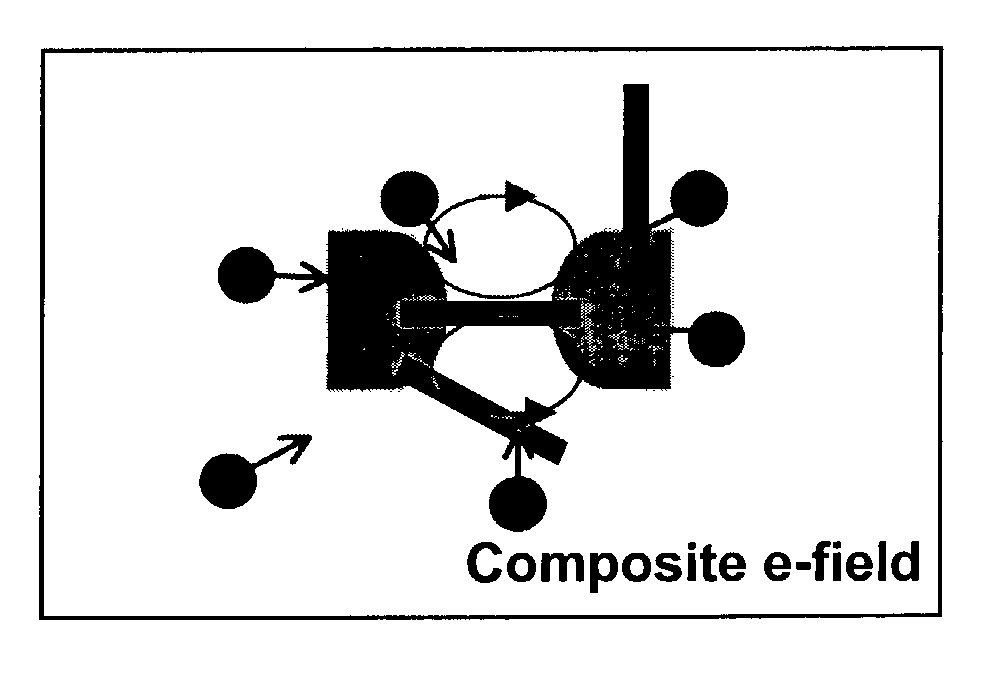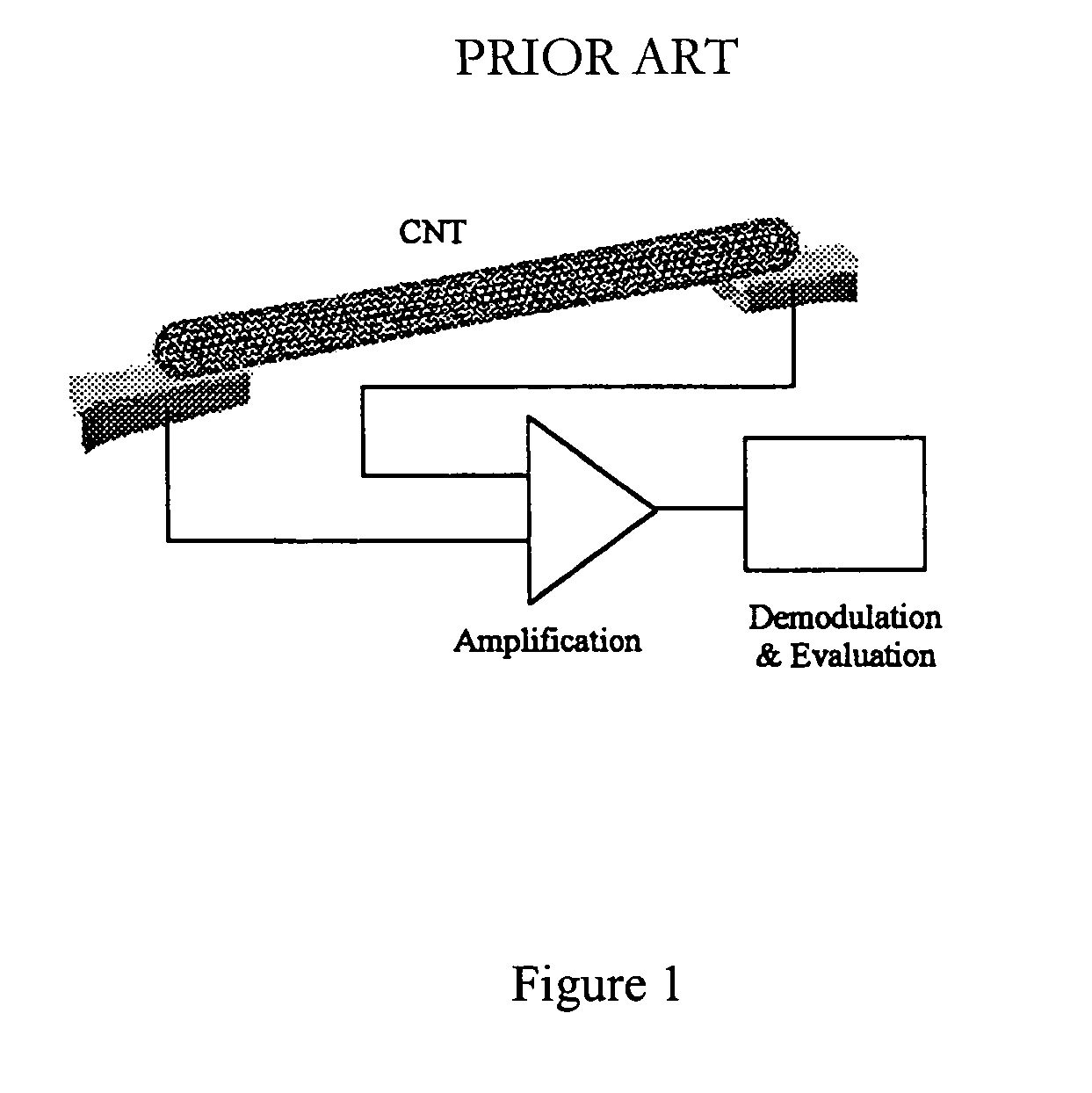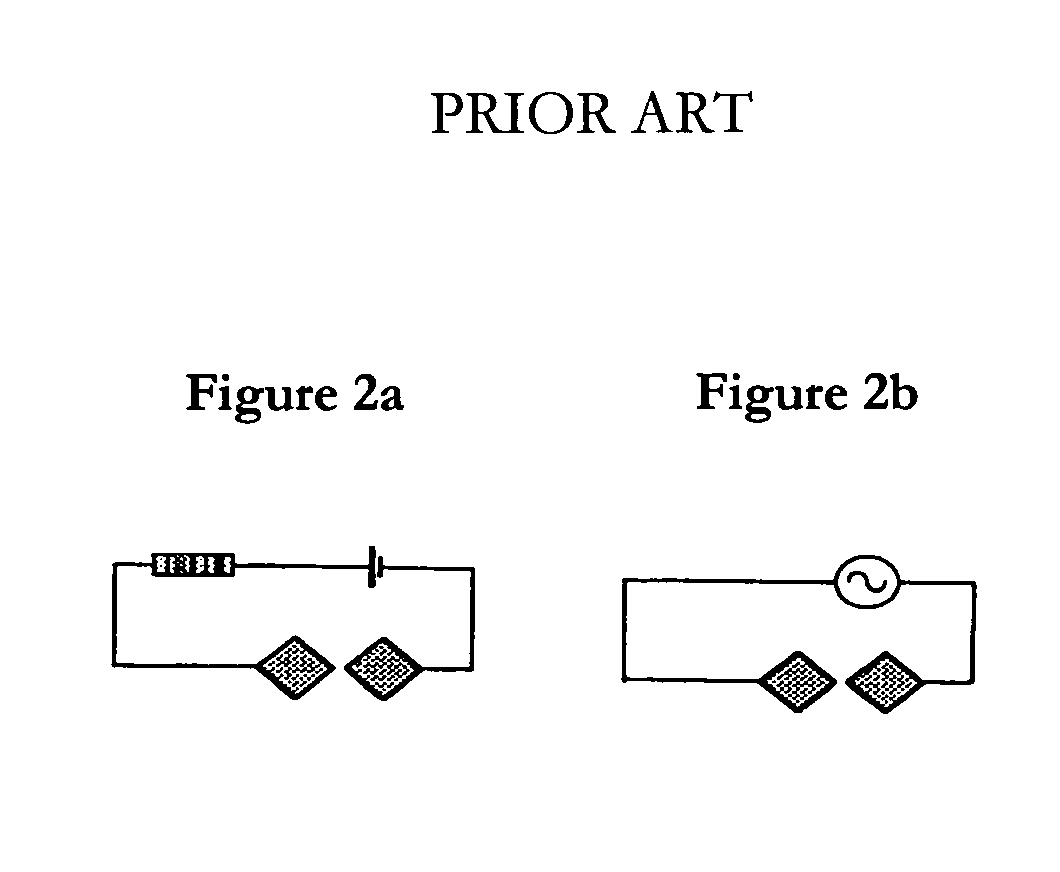Methods and related systems for carbon nanotube deposition
a carbon nanotube and carbon nanotube technology, applied in the direction of fluid pressure measurement, liquid/fluent solid measurement, peptide, etc., can solve the problems of limited success of chemical vapor deposition and chemical patterning methods, unsuitable methods for the present concern, and difficult to attract cnts
- Summary
- Abstract
- Description
- Claims
- Application Information
AI Technical Summary
Benefits of technology
Problems solved by technology
Method used
Image
Examples
example 1a
[0061]FIG. 3 and FIG. 4 illustrate a composite field tuning procedure to adjust the dc / ac ratio. A gap by flat electrodes was used for the tuning process. When only a dc electric field (Edc / Eac=∞) was applied across the gap in FIG. 3, round particles were gathered between electrodes, and a few carbon nanotubes were attracted and randomly distributed [FIG. 3(a)]. When the ratio was 1.22, more CNTs were attracted with fewer round particles gathered in the gap [FIG. 3(b)]. Although some CNTs were arrayed periodically, others were randomly placed without orientation.
example 1b
[0062]When only an ac field was applied (EDC / EAC=0), particles were rarely gathered and a few CNTs were attracted [FIG. 3(c)]. A few CNTs were attached together and the CNTs whose length was shorter than the gap size were attached to either side of the electrodes.
example 1c
[0063]FIG. 3 shows the cases when the ratio, EDC / EAC is between 0 and 1. CNTs were periodically deposited in these cases. This periodicity is attributed to the periodic hydrodynamic flow created by dc component of the electric field. As the ratio decreased, i.e., as ac component becomes stronger, the period between deposited CNTs became larger with the decreasing number of deposited particles.
PUM
| Property | Measurement | Unit |
|---|---|---|
| diameter | aaaaa | aaaaa |
| diameters | aaaaa | aaaaa |
| distance | aaaaa | aaaaa |
Abstract
Description
Claims
Application Information
 Login to View More
Login to View More - R&D
- Intellectual Property
- Life Sciences
- Materials
- Tech Scout
- Unparalleled Data Quality
- Higher Quality Content
- 60% Fewer Hallucinations
Browse by: Latest US Patents, China's latest patents, Technical Efficacy Thesaurus, Application Domain, Technology Topic, Popular Technical Reports.
© 2025 PatSnap. All rights reserved.Legal|Privacy policy|Modern Slavery Act Transparency Statement|Sitemap|About US| Contact US: help@patsnap.com



